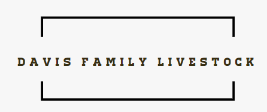The Cutest Sheep in the World? Definitely!
The Valais Blacknose Sheep
What are Valais Blacknose Sheep (VBS)?
The Valais Blacknose are a rugged sheep breed that originates in the Valais region of the Swiss Alps. They are considered a large breed. Mature females (2 years old+) weigh between 150-200 pounds, while rams are 175-275 pounds. Females are 2.3 - 2.5 feet tall and rams are 2.5 - 2.7 feet tall. The Valais is a mainly white sheep with a black coloring that covers their nose up to their eyes and their ears. Knees, hocks and feet are also black. Their thick, curly coat grows about 1 inch every month and requires shearing twice a year. Both rams and ewes are polled, with sprial or helical shaped horns.
This Swiss heritage breed has a calm, friendly nature and a unique fluffy appearance. They have recently grown in popularity as they make ideal pasture pets. They are easily trained to lead without much effort.
Their fiber is perfect for hand spinning, felting, weaving, outer apparel and rugs.
Establishing and Building the Breed in America
The Valais Blacknose Sheep is considered a rare breed, with approximately 20,000 animals in the world. Currently, restrictions do not allow for importation of live sheep into the United States.
Fortunately, purebred semen and just recently purebred embryos have been made available for import to the US, allowing for us to initiate a breed -up program.
Our Sheep
Our upgrading program has produced F1, F2, F3 and F4 VBS lambs. This season, we were working towards F4 (94%), with success.
We have F1, F2 and F3 lambs available for purchase.
We are currently utilizing semen from our purebred ram, Davis’ Primo, Solwaybank Extra Special, Remarkable Albert, Parkdale Crackers and other lines. In addition to our purebred ram, we have F2, F3 and F4 lambs established as a result of our genetic upgrading plan.
Our Breed Up Program
In order to build up the VBS breed in the U.S., semen needs to be bred with an established sheep breed here, and subsequently bred up to eventually reach 97% purebred status.
We can help.





